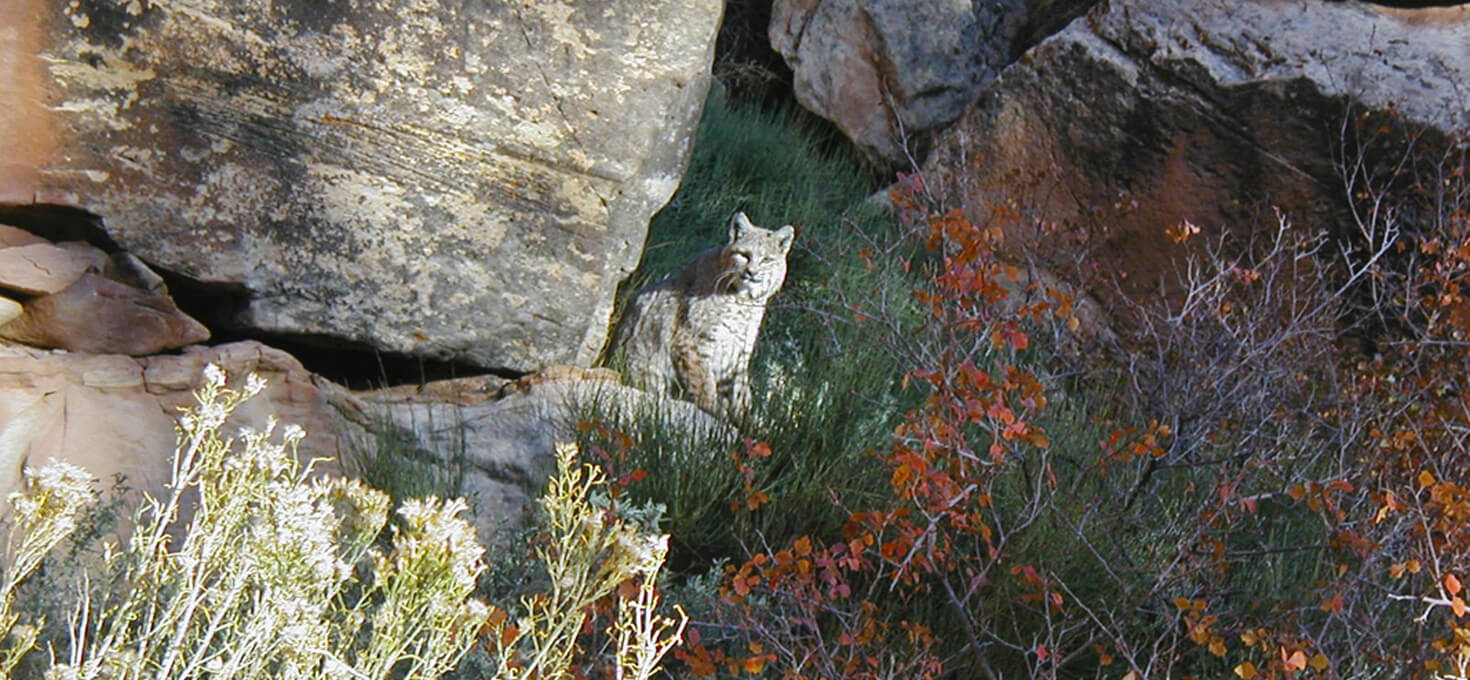
Capitol Reef National Park, located in south-central Utah, is a striking landscape of cliffs, canyons, and domes, supporting a diverse array of wildlife uniquely adapted to its desert environment. The park’s varied habitats, from riparian corridors along the Fremont River to high desert plateaus, host an array of species. Mule deer are frequently seen grazing in the early morning and late evening, while desert bighorn sheep adeptly navigate the rugged terrain. Smaller mammals such as rock squirrels, jackrabbits, and kangaroo rats are common, often observed foraging among the park’s rocky outcrops and arid shrublands. The park’s birdlife includes golden eagles, red-tailed hawks, and a variety of songbirds that add to the region’s vibrant soundscape. Reptiles, such as collared lizards and gopher snakes, thrive in the hot, dry climate.
Capitol Reef’s diverse wildlife, thriving amidst its unique geological features, highlights the ecological richness of this desert park, offering visitors a glimpse into the adaptability and resilience of life in such an arid environment. Keep reading to see featured photos of Capitol Reef’s wildlife and to learn more about wildlife photography.
Featured Capitol Reef National Park Wildlife Photographs
Have a National Park Wildlife photograph you’d like featured? Contact us today to learn more!
Wildlife Photography Tips
Wildlife photography in the US National Parks offers a unique and enriching experience, as these protected areas are havens for diverse species and pristine natural landscapes. Capturing wildlife in such settings requires preparation and respect for both the environment and its inhabitants. Photographers should familiarize themselves with the specific animals and ecosystems of the park they are visiting, as each park hosts different species and behaviors. Early mornings and late afternoons, known as the golden hours, provide the best light and increased wildlife activity. Different seasons also offer different wildlife viewing opportunities. Patience and stillness are key, as the best moments often come to those who wait quietly.
If wildlife does present itself, always make sure to maintain a safe distance. Using a telephoto lens allows for close-up shots without intruding on the animals’ space. If you already own or want to own a professional grade mirrored camera like the Canon EOS 5D Mark IV Full Frame Digital SLR, we recommend using a Canon EF 100-400mm f/4.5-5.6L is II USM Lens zoom lens for wildlife photography. If you have or are interested in a newer mirrorless model like the Canon EOS R5 Full-Frame Mirrorless Camera, we recommend using a Canon RF100-400mm F5.6-8 is USM Black for long distance shots.
Not quite ready to invest in traditional professional grade camera equipment, but want to enhance the quality of your cell phone photographs? Consider using a Moment 58mm Tele Lens for an improved zoom and be sure you have a compatible phone case to mount your new lens in. Since cell phones don’t have the same zoom distance and quality as traditional professional cameras, be extra mindful about your distance from wildlife when photographing them and don’t get too close. As with any visit to a national park, it’s important to follow park regulations, practice “Leave No Trace” principles, and prioritize safety while photographing wildlife.

Capitol Reef Wildlife Education and Resources
Want to learn more about Capitol Reef National Park and the wildlife that inhabits it? Check out these guides & books:
- Peterson Field Guide To Mammals Of North America: Fourth Edition (Peterson Field Guides)
- Peterson Field Guide To Birds Of Eastern & Central North America, Seventh Ed. (Peterson Field Guides)
- Peterson Field Guide To Birds Of Western North America, Fifth Edition (Peterson Field Guides)
- Bird Songs: 250 North American Birds in Song
- Peterson Field Guide To Reptiles And Amphibians Eastern & Central North America (Peterson Field Guides)
- Peterson Field Guide To Western Reptiles & Amphibians, Fourth Edition (Peterson Field Guides)
- Peterson Field Guide to Freshwater Fishes, Second Edition (Peterson Field Guides)
- Animal Tracks: A Folding Pocket Guide to the Tracks & Signs of Familiar North American Species (Wildlife and Nature Identification)
Please note, by making purchases through our affiliate links, you are supporting our mission to celebrate and showcase our National Parks and the photographers who frequent them. As an Amazon Associate, National Park Photographer earns from qualifying purchases at not cost to you. We appreciate your support.
Capitol Reef National Park Species List
The wildlife at Capitol Reef National Park is beautiful and diverse. There are a variety of mammals, birds, reptiles, amphibians and fish to view. Check out all the incredible species this park has to offer! Click on the links below to see the different animal species that inhabit Capitol Reef National Park:
Capitol Reef National Park Mammals
| Name | Abundance |
|---|---|
*It is not known for certain if this species is actually in the park. This species is marked by the National Park Service as “Probably Present” in Capitol Reef National Park.
Capitol Reef National Park Birds
| Name | Abundance |
|---|---|
*It is not known for certain if this species is actually in the park. This species is marked by the National Park Service as “Probably Present” in Capitol Reef National Park.
Capitol Reef National Park Reptiles
| Name | Abundance |
|---|---|
*It is not known for certain if this species is actually in the park. This species is marked by the National Park Service as “Probably Present” in Capitol Reef National Park.
Capitol Reef National Park Amphibians
| Name | Abundance |
|---|---|
*It is not known for certain if this species is actually in the park. This species is marked by the National Park Service as “Probably Present” in Capitol Reef National Park.
Capitol Reef National Park Fish
| Name | Abundance |
|---|---|
*It is not known for certain if this species is actually in the park. This species is marked by the National Park Service as “Probably Present” in Capitol Reef National Park.
Note: The wildlife species included in the lists above have been confirmed with the National Park Service to be present or probably present in Capitol Reef National Park. Other species may exist in the park that are currently under review or not yet known.
Do you want to be featured on National Park Photographer?
Why wait! Contact us today at nationalparkphoto@gmail.com for more information!


